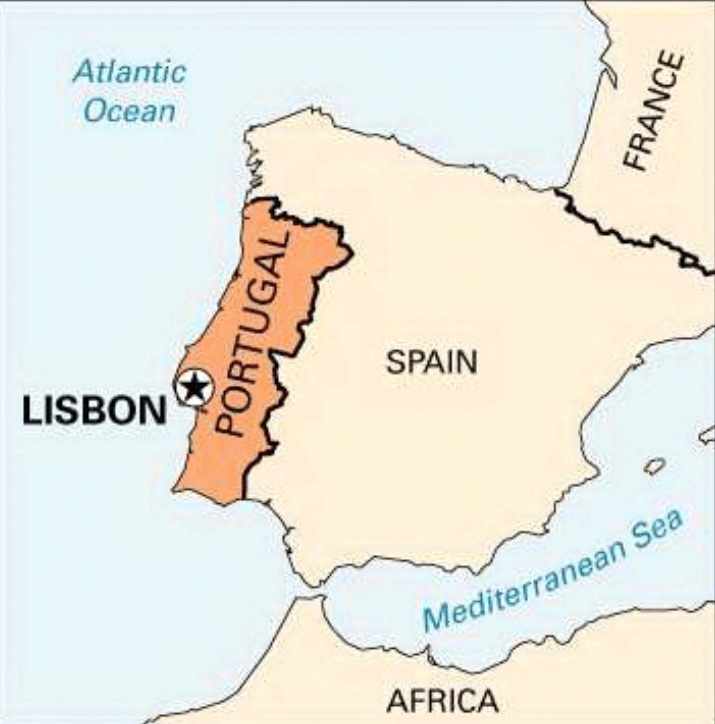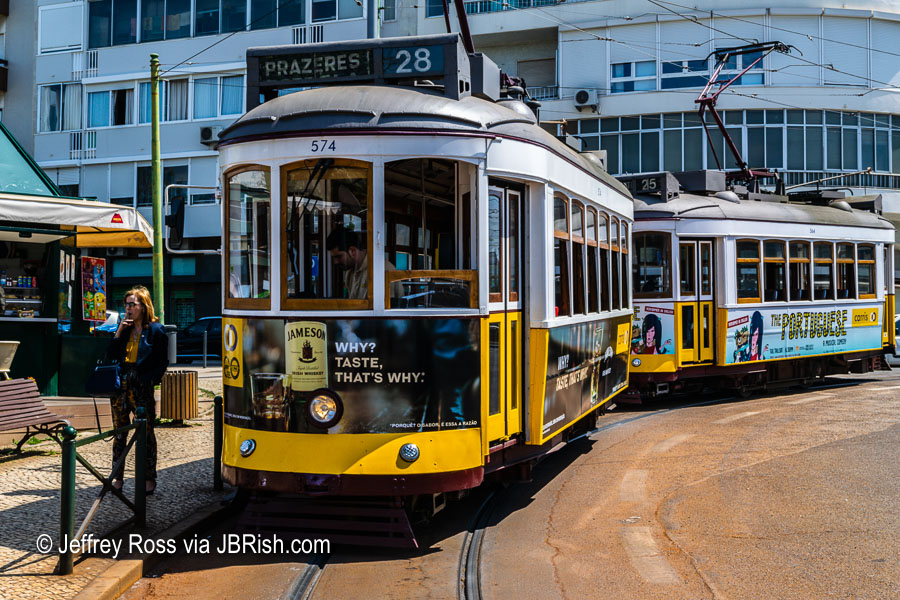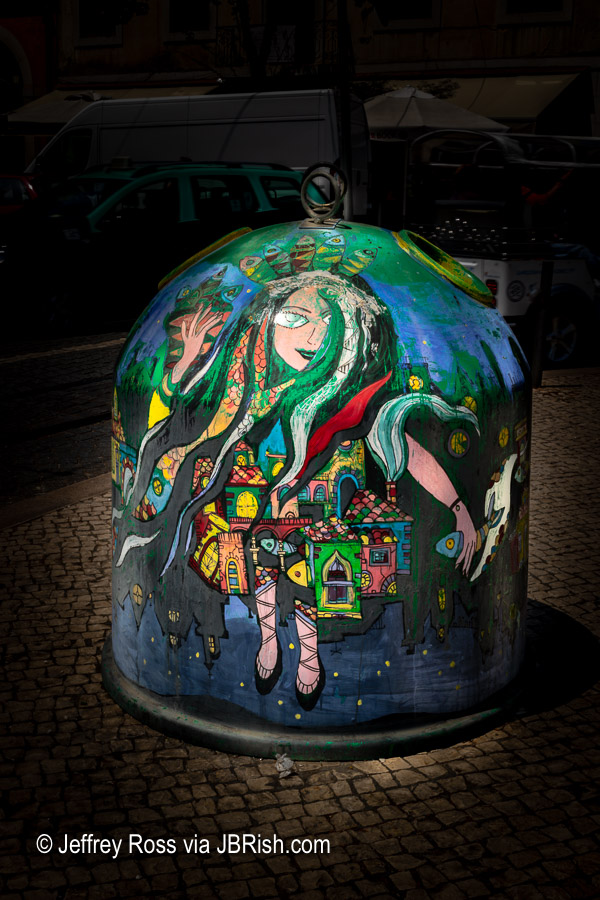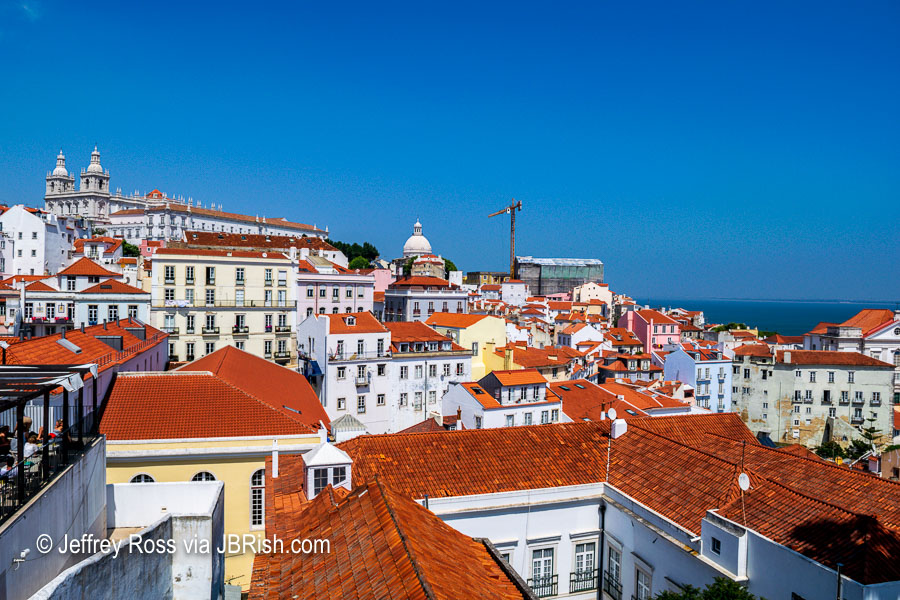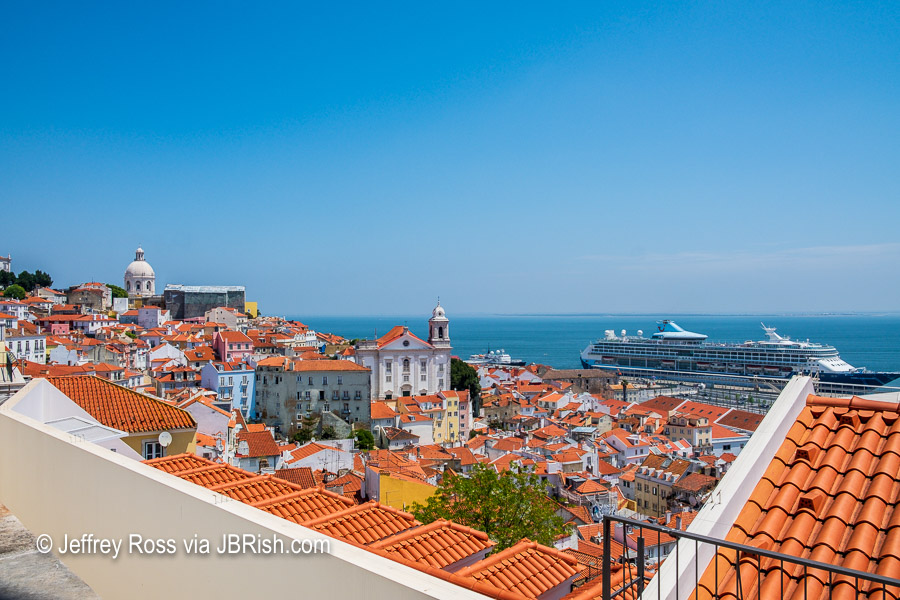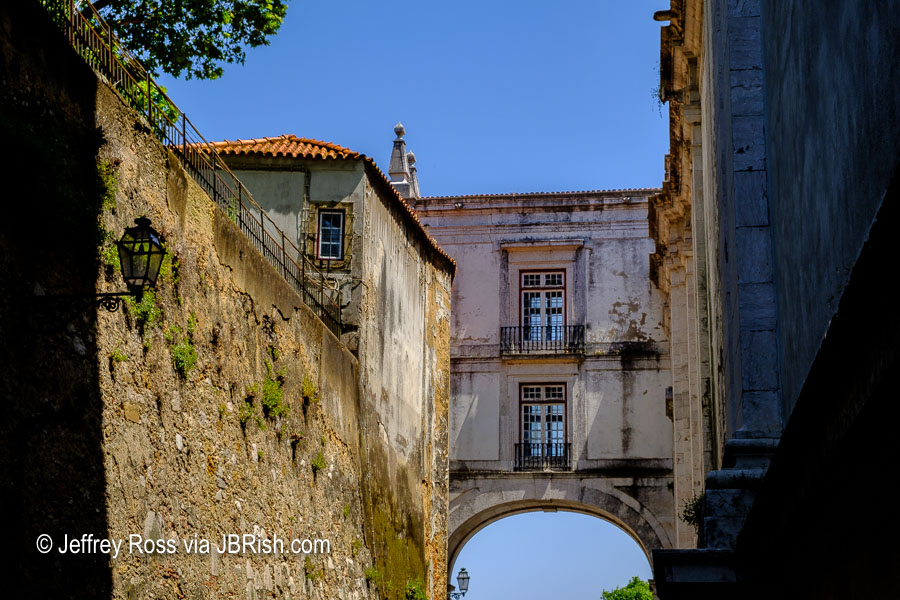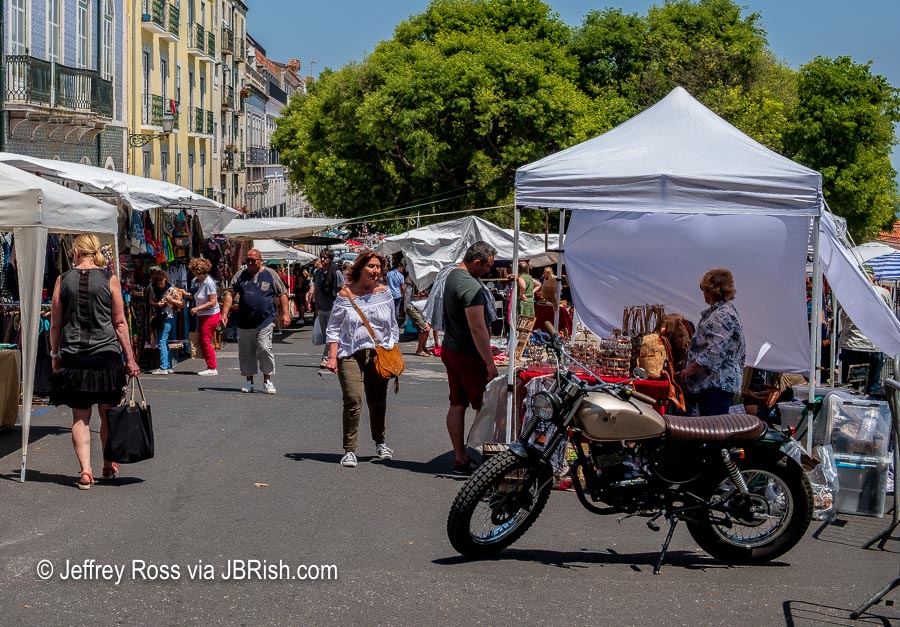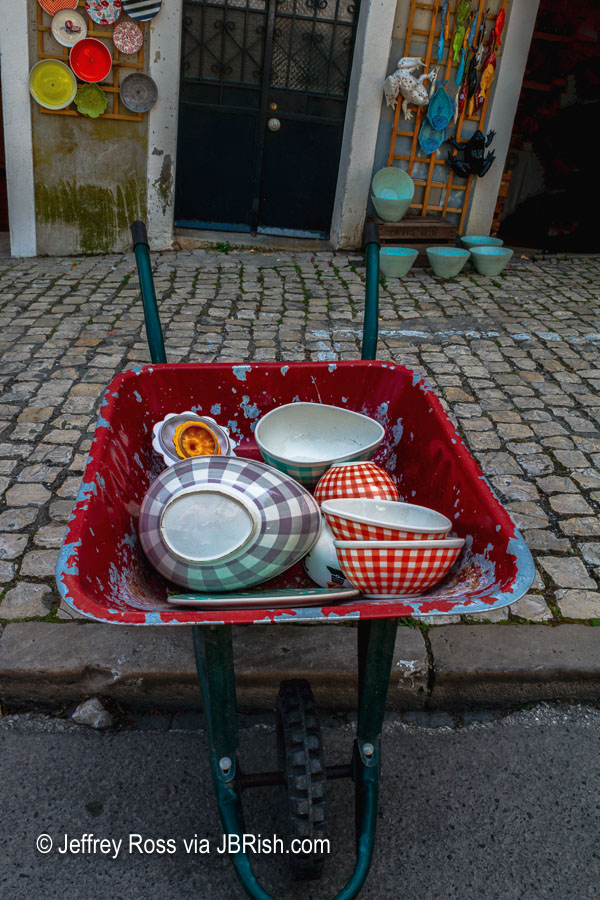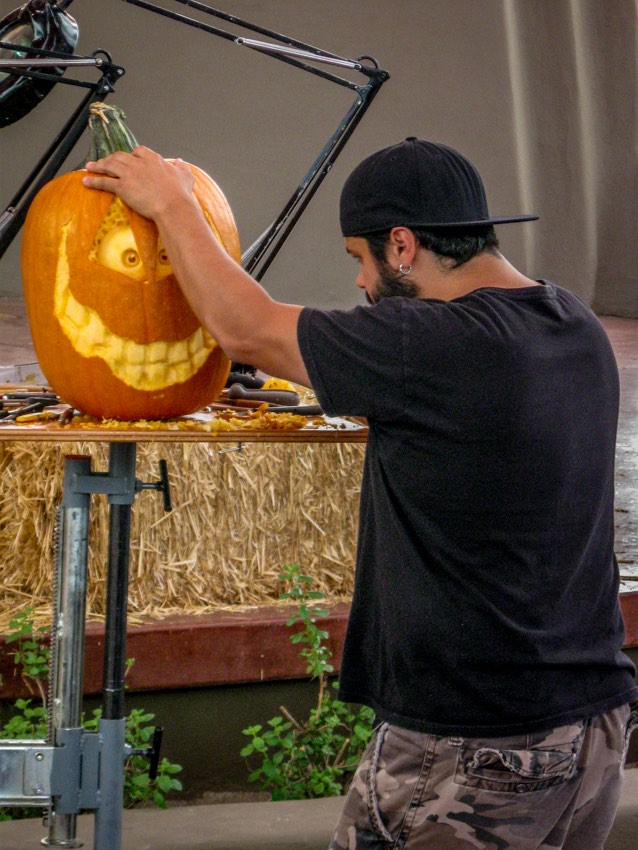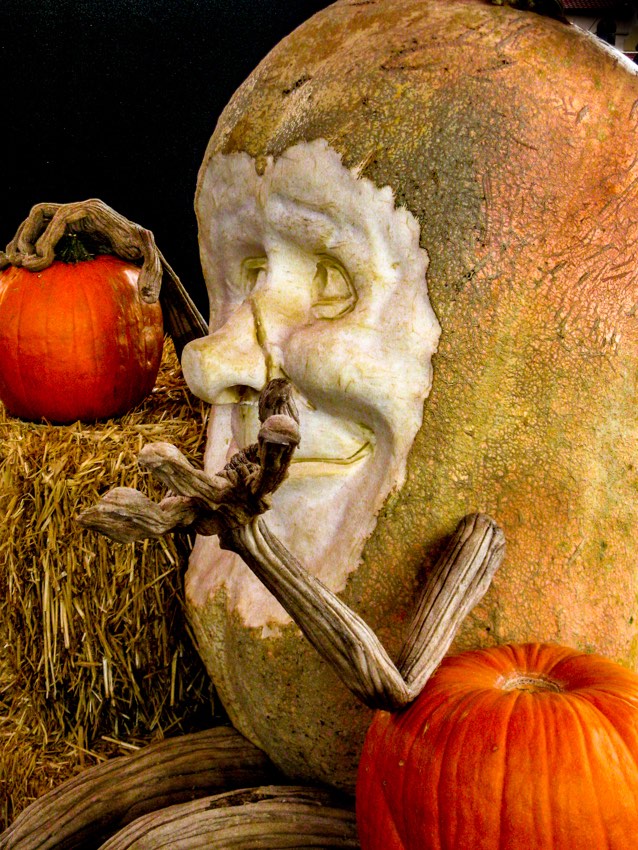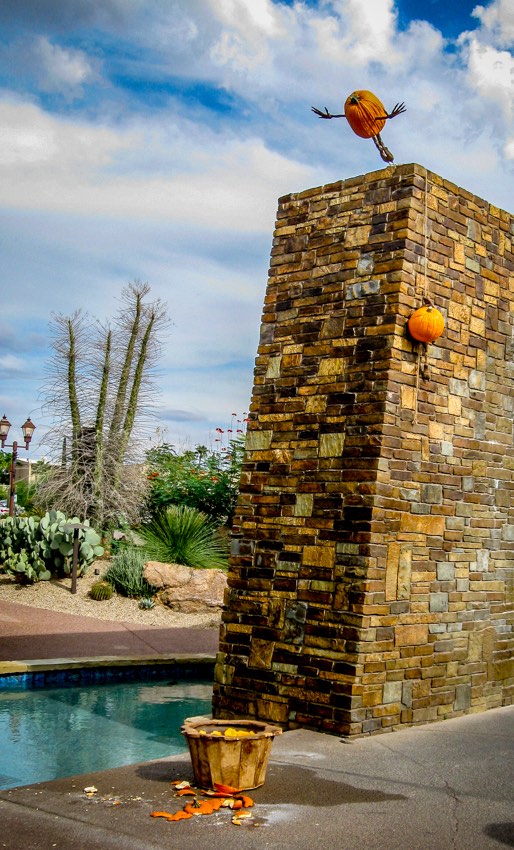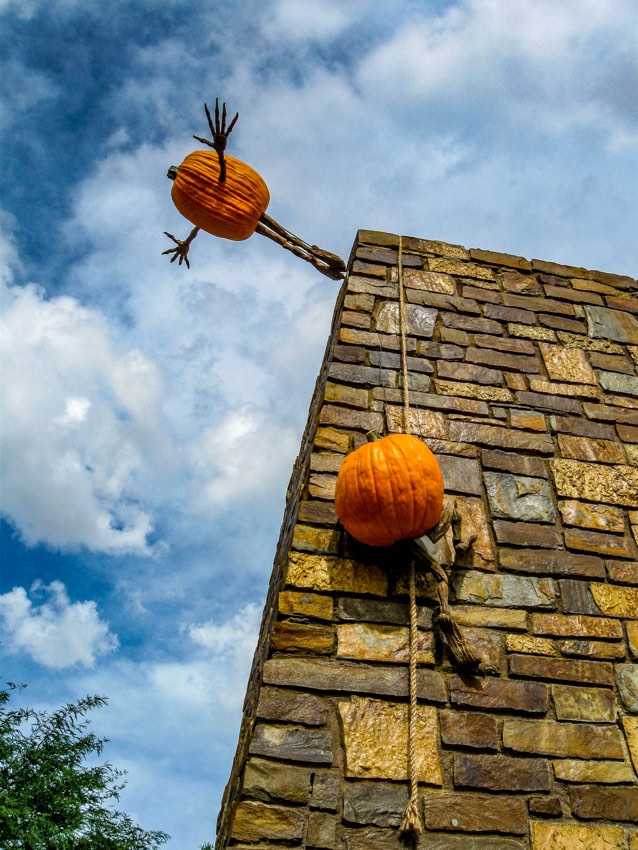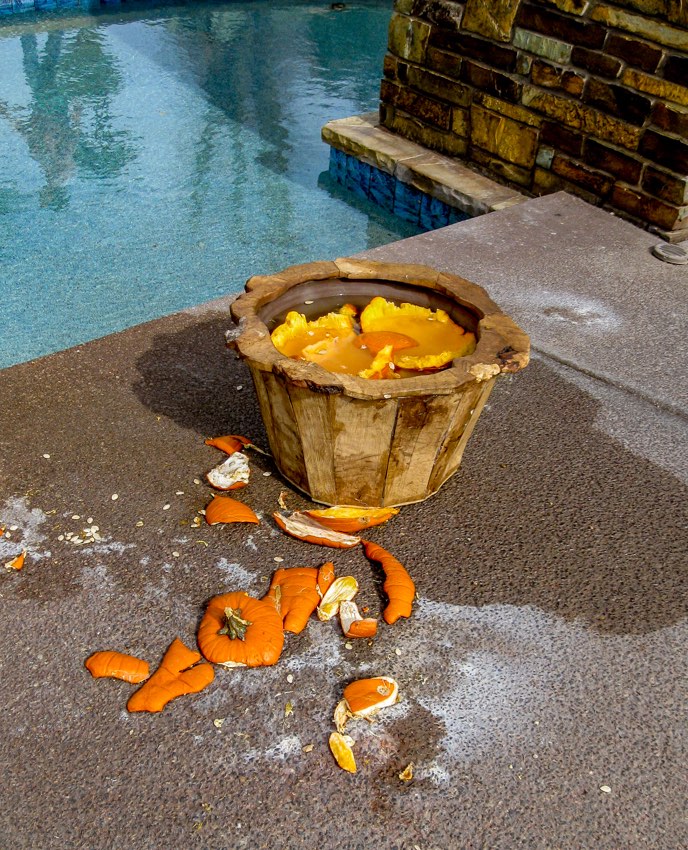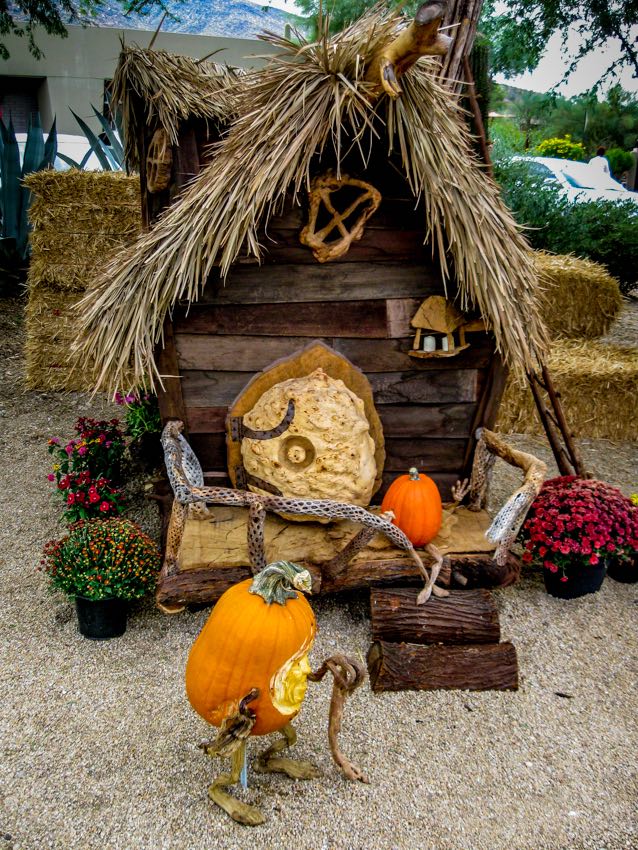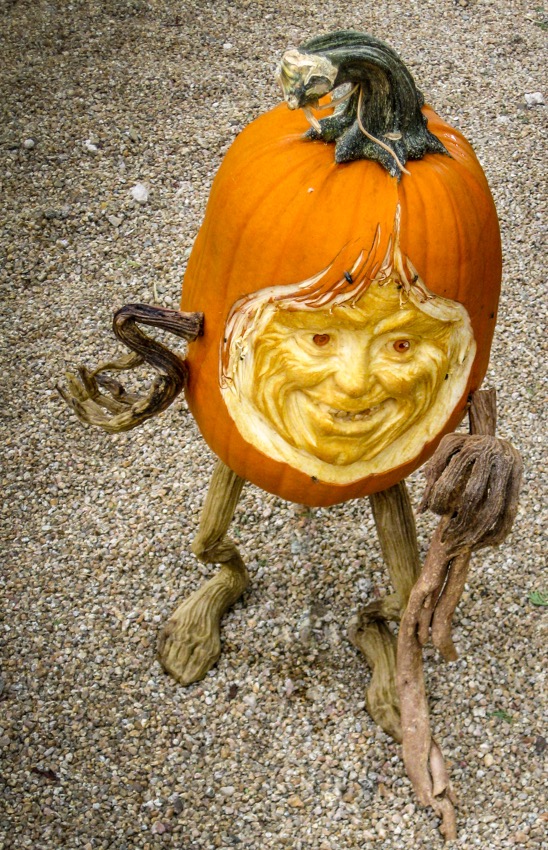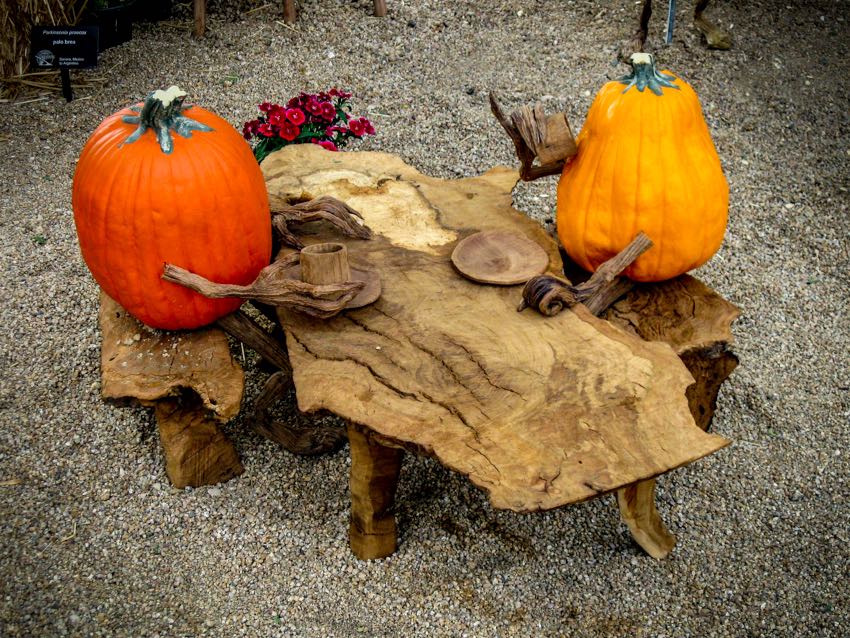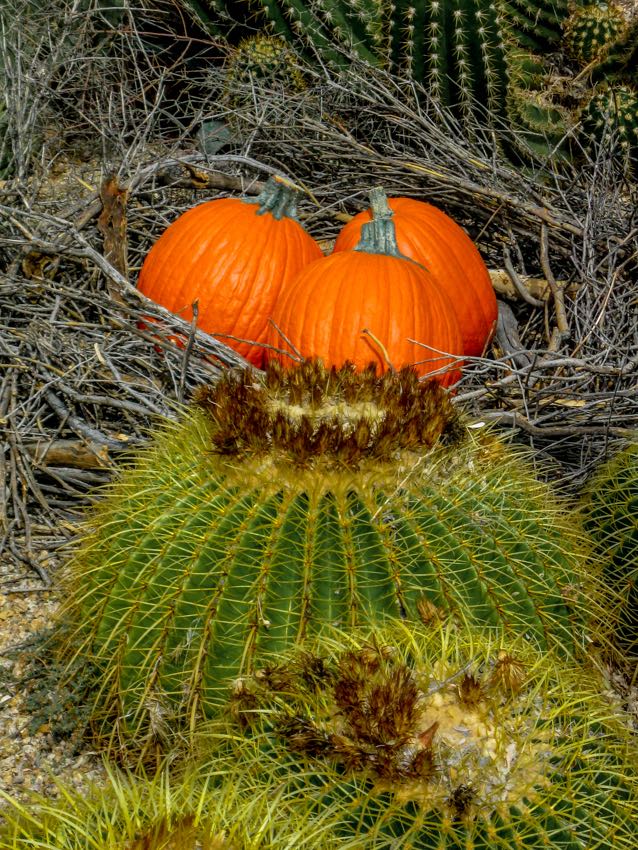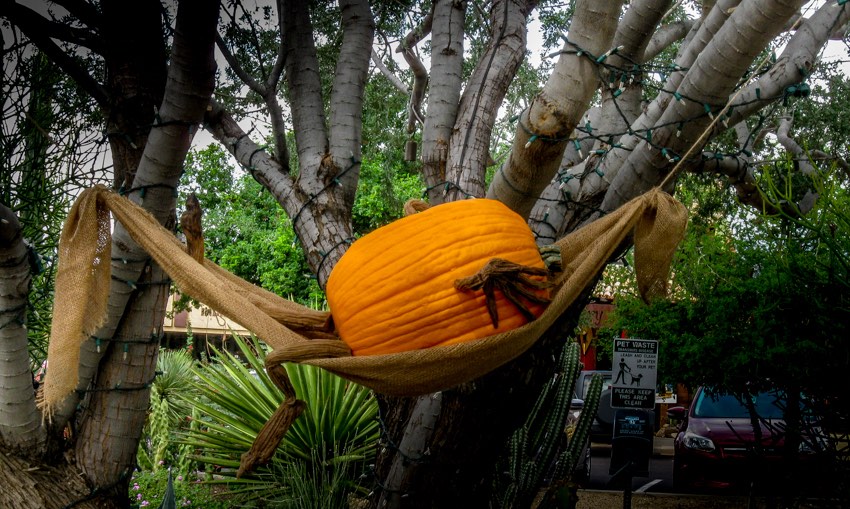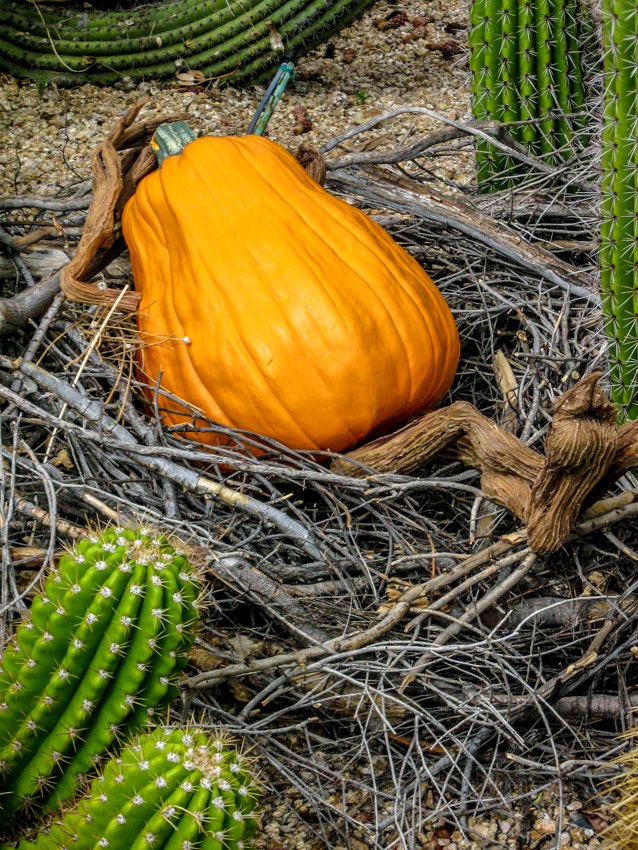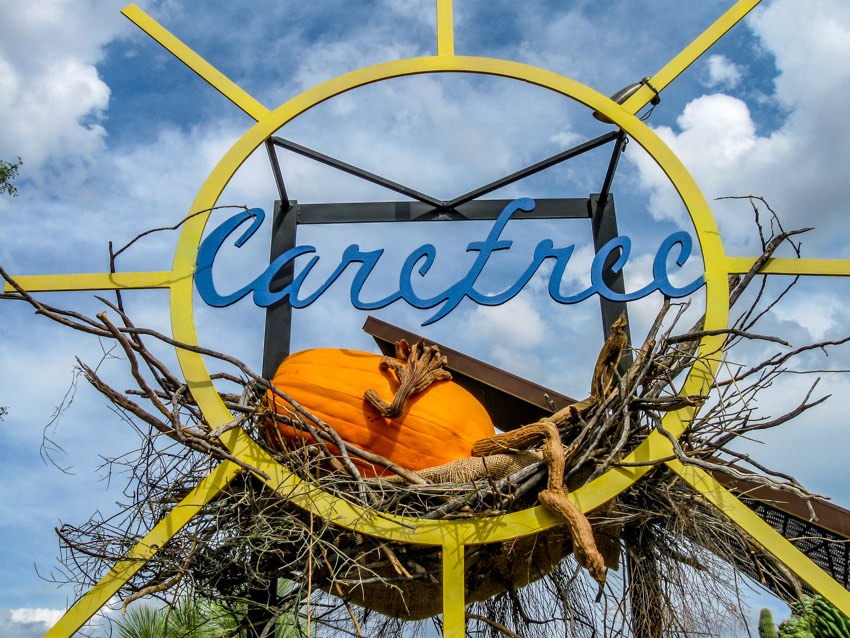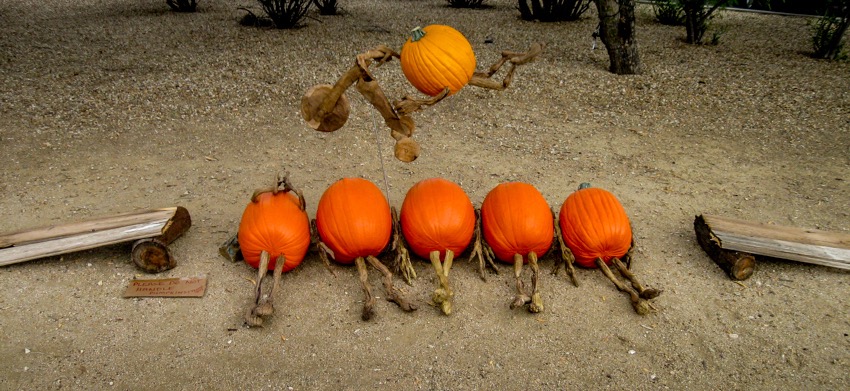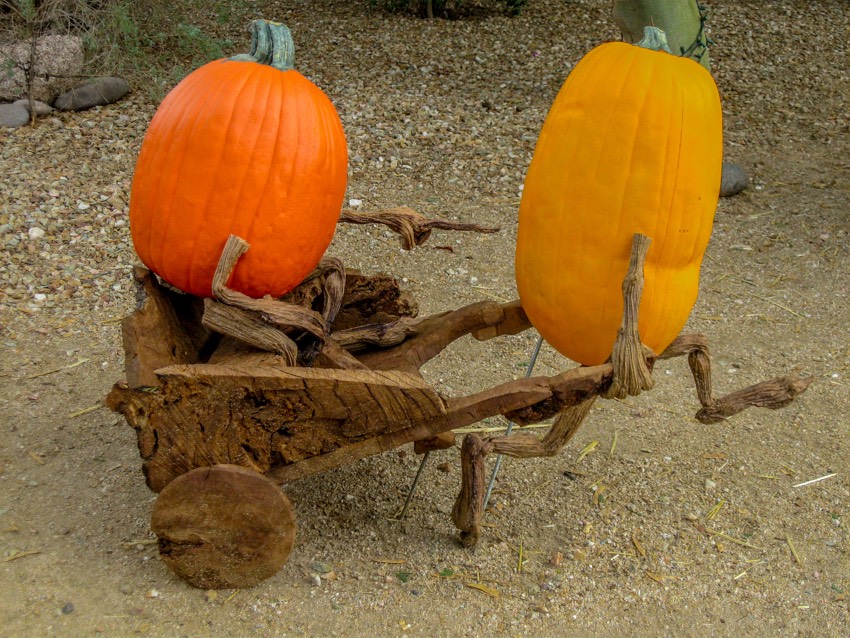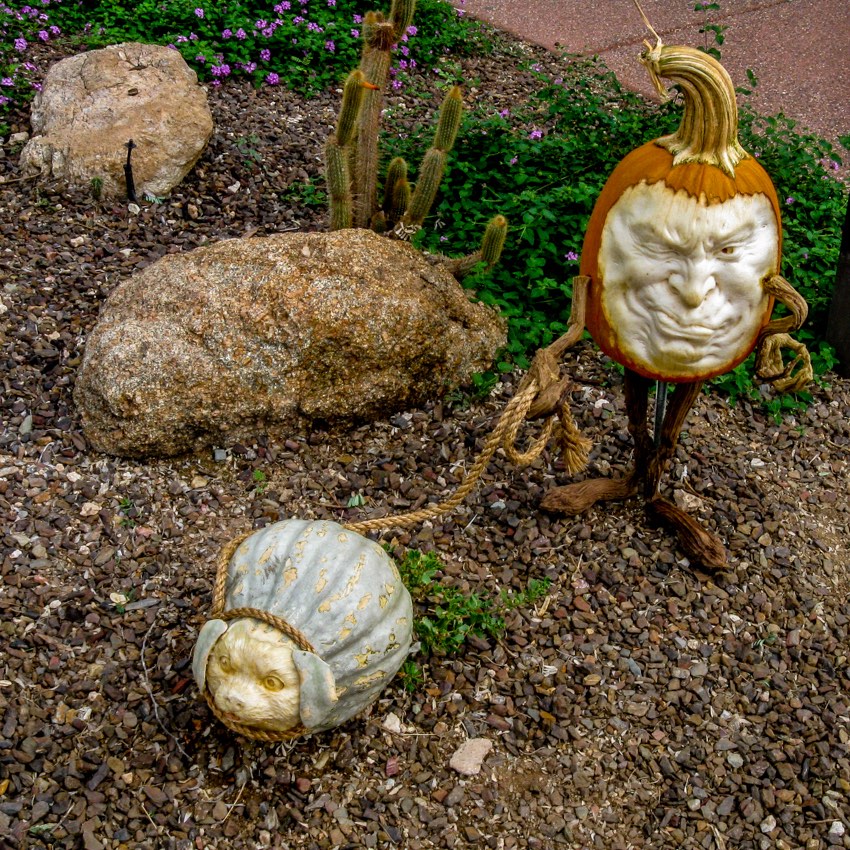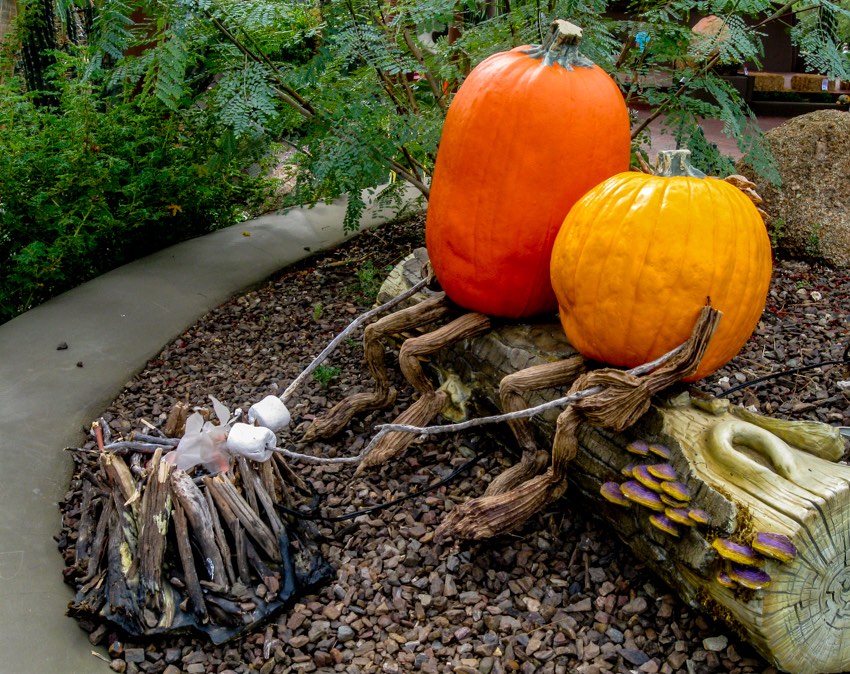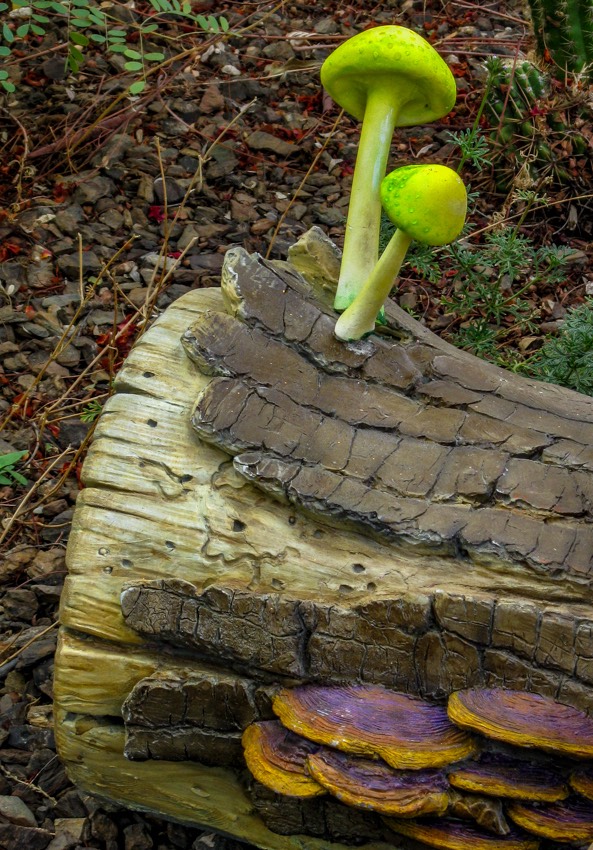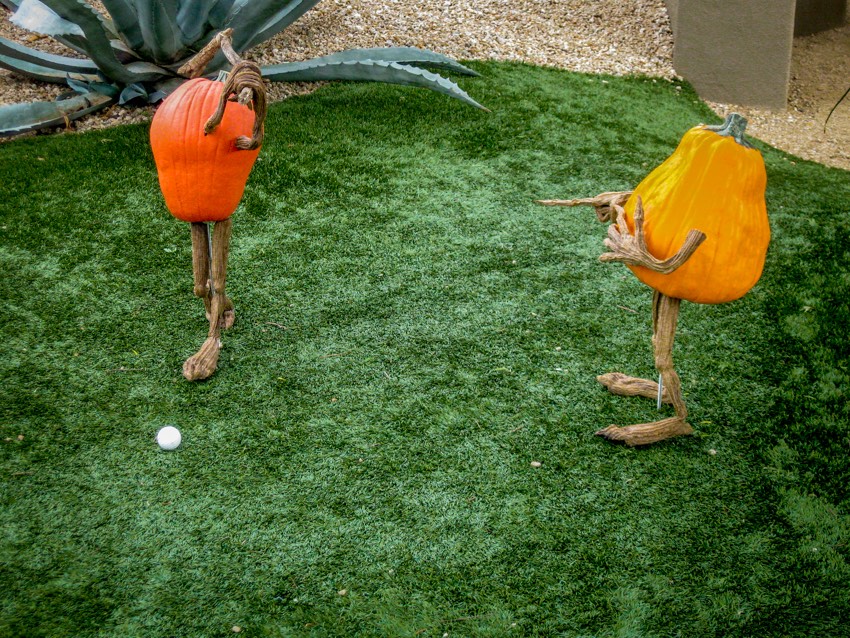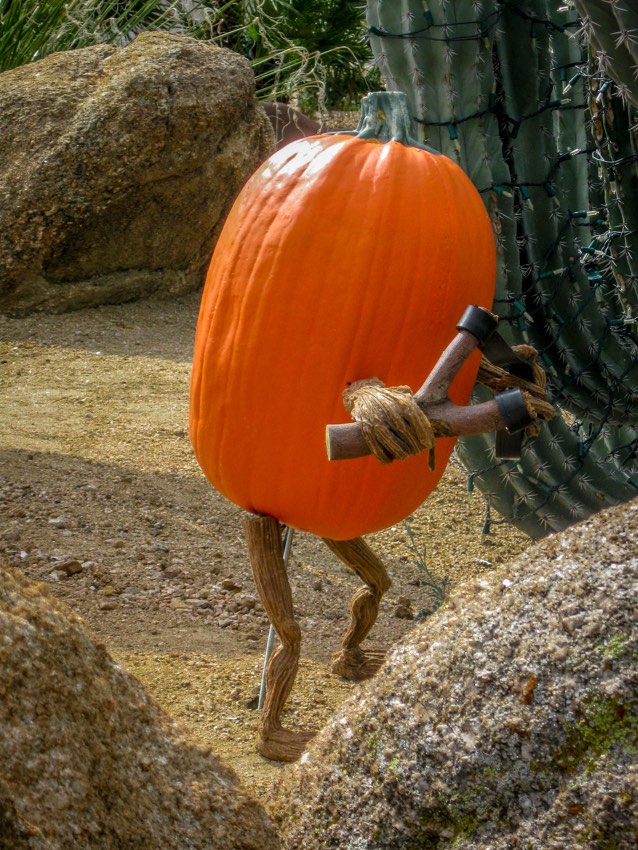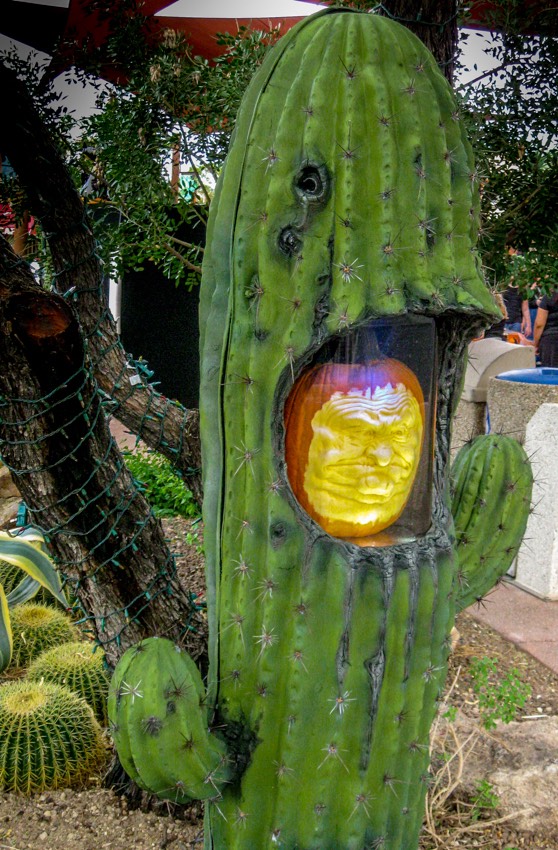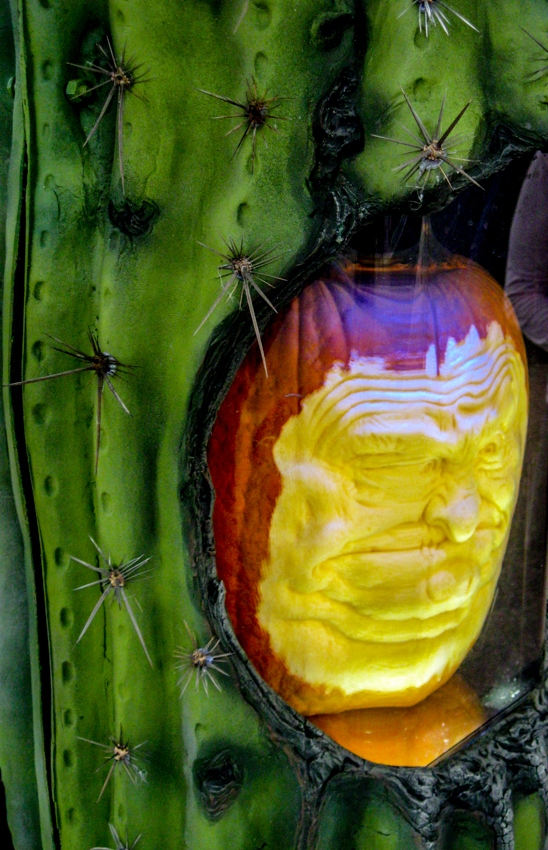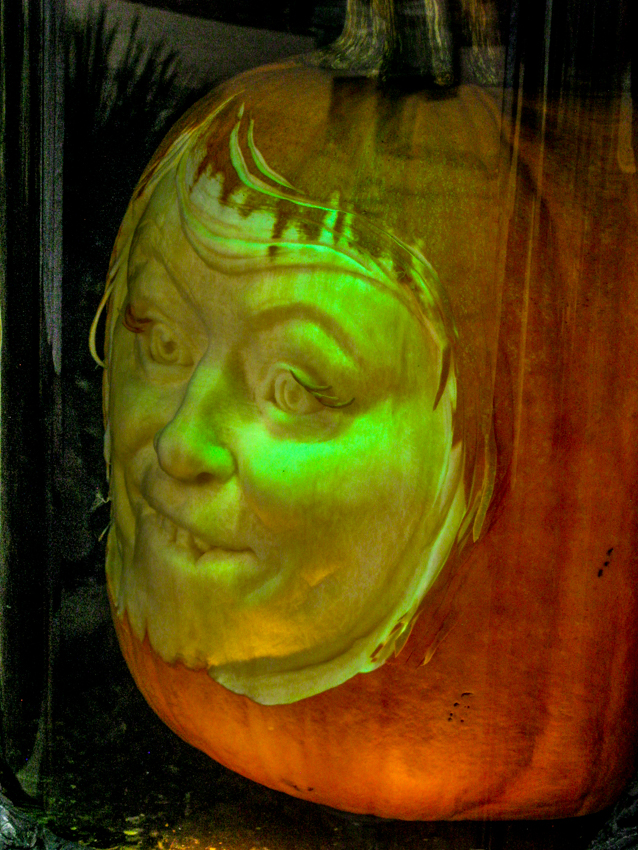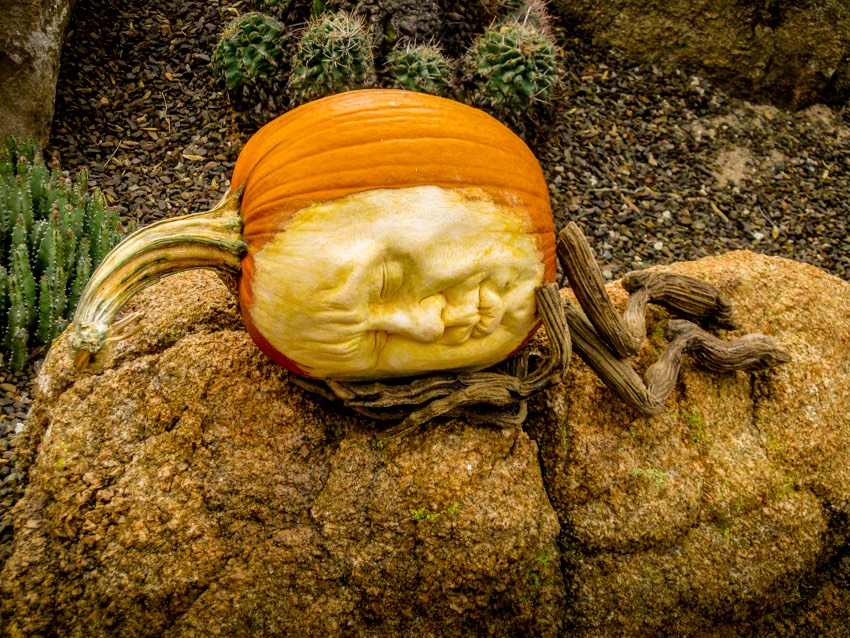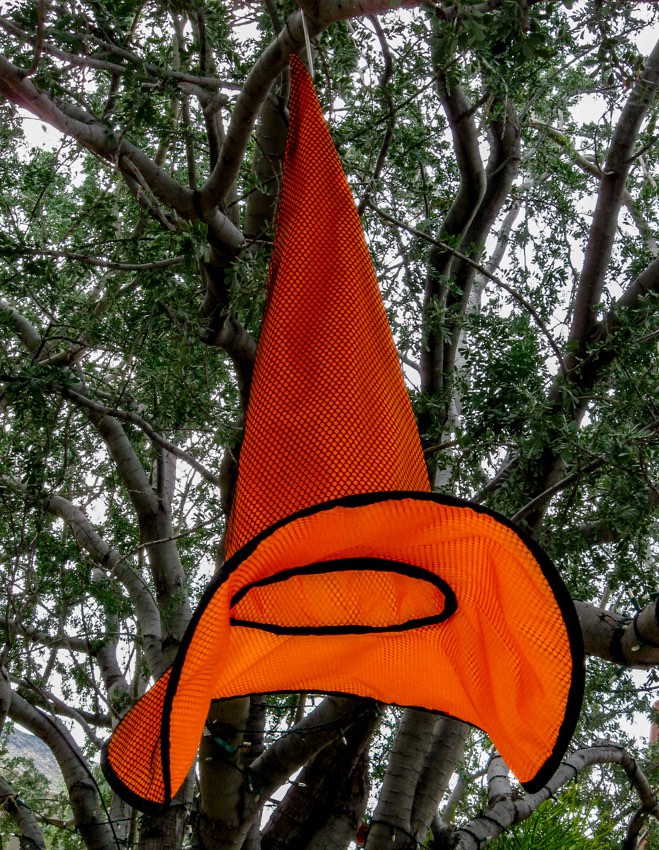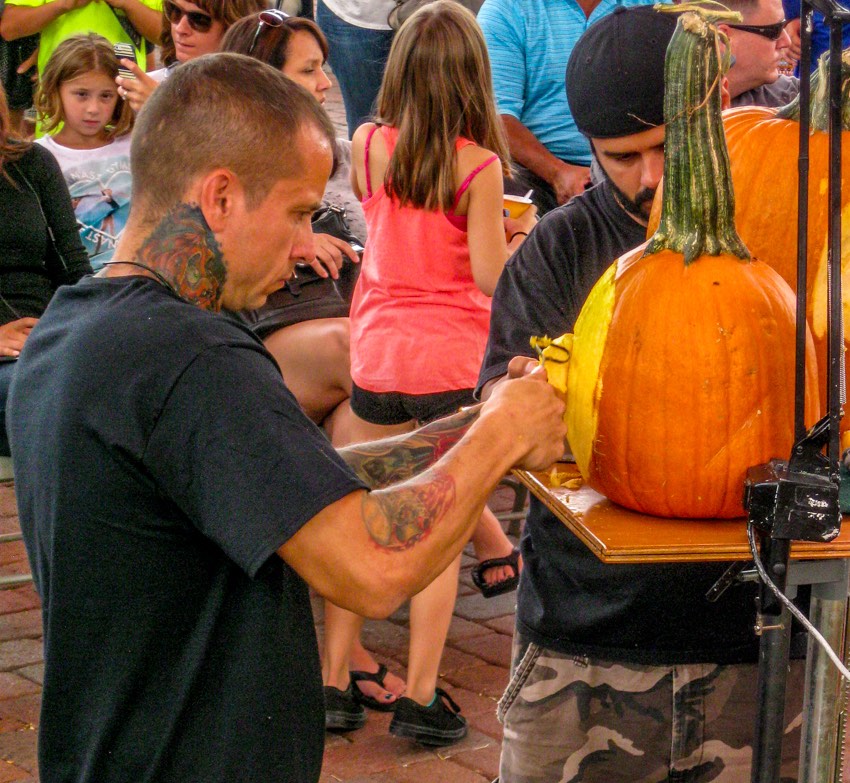Traveling in a foreign country is definitely peculiar because we generally find ourselves out of our comfort zone. If there is a language difference and a number of significant cultural differences, this can be even more pronounced. After a single day in Portugal however, we felt more or less at ease.
One of the first things we do when we arrive at our hotel in a foreign area, is to secure a business card with the name and address of the establishment. If we then get lost, we are only a taxi ride away and we can just show the card to the cab driver. We took two cabs during our stay in Lisbon and both experiences were positive. Interestingly, as we learned, the customary tip for taxi drivers in Portugal is to round up to the next highest Euro. At the time we visited, the Euro was about $1.21 USD (+/-) which means the largest tip would be $1.21. Of course, tourists can tip more if they like.
Lisbon is a hilly city. It is known as the City of Seven Hills so be prepared to walk uphill sooner or later or to hail a taxi.
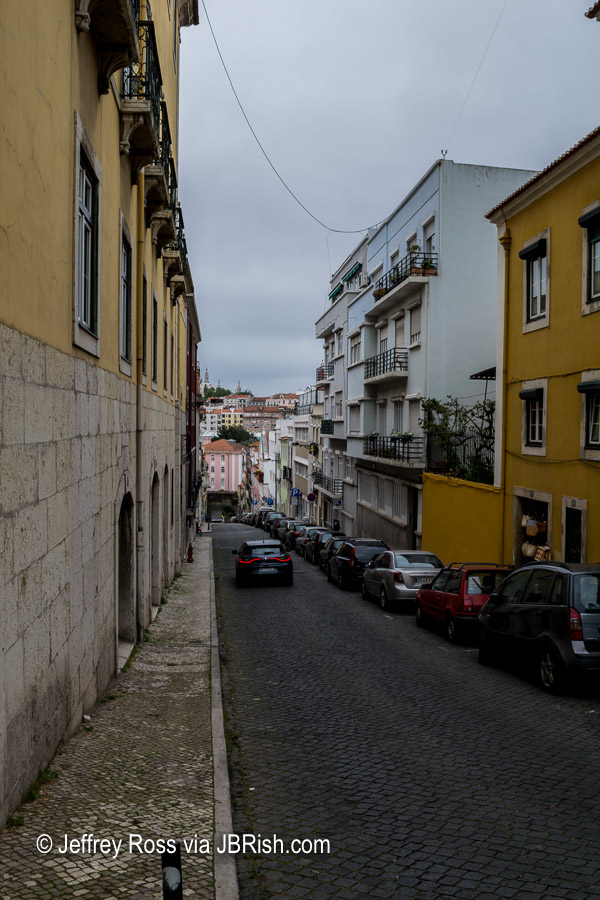
As you can see the street above was a bit steep as we headed toward the Jardim Botânico da Universidade de Lisboa (The University of Lisbon Botanical Garden).
We walk and then we walk some more when we visit new countries or regions. We love to walk around town and get a good sense of the city or area we are visiting. Like most major cities, there were McDonald’s restaurants in Lisbon. As you will note in the center of the shot below, the golden arches are rather muted. No large red background here. We stepped inside to note the differences between American McDonald’s and those in Portugal and while we did not purchase anything, it was interesting to note that they served coffee in ceramic coffee cups for patrons who had their coffee in the restaurant.
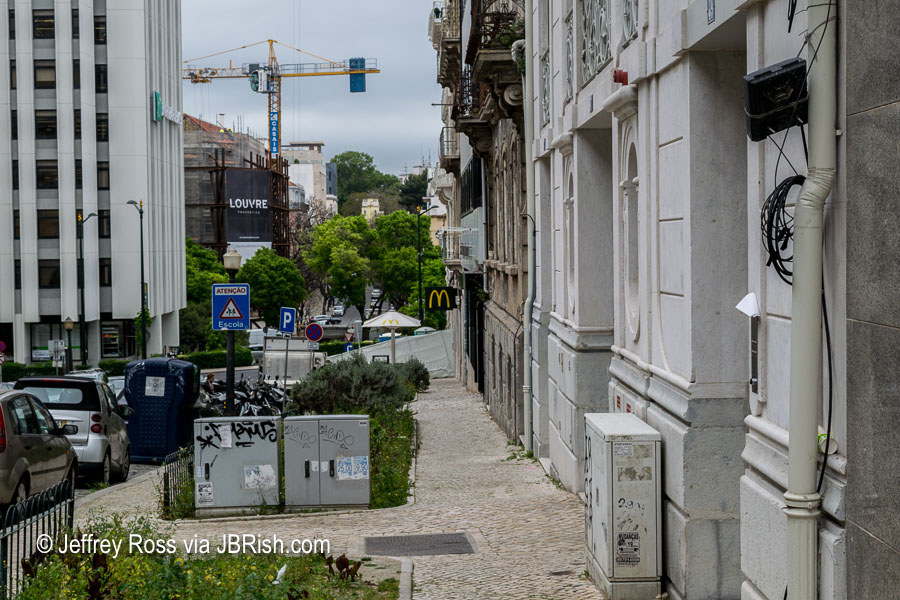
Again we were walking downhill which we know from our hiking will be an uphill on the return trip.
We have visited many gardens in our travels and I have to comment that this particular garden is not what I would call a display garden. It appeared to be more of a research garden. There were few dramatic landscape areas and only a scattering of flowers at the time we visited. We were a bit disappointed, but found some sections of interest. The tree below had an amazing display of air roots.

The garden had resident cats probably serving as mousers. This tabby on the roof was spotted in several areas and had a friend or sibling that was remarkably similar.

On the walk back to our hotel, we encountered this happy drainpipe festooned with a floral array. I had to return the smile as I took the picture.
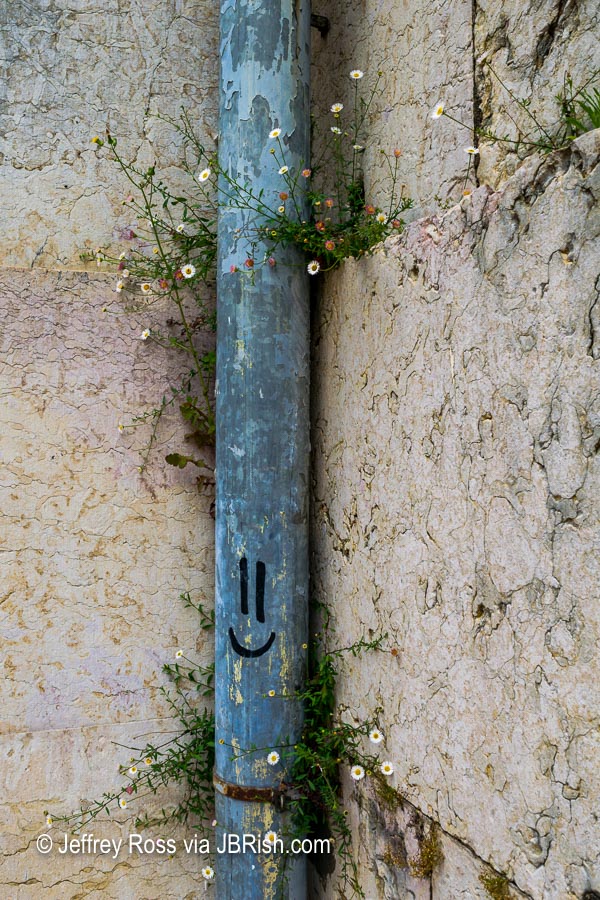
Pictured below is another interesting trash/recycle bin we encountered.
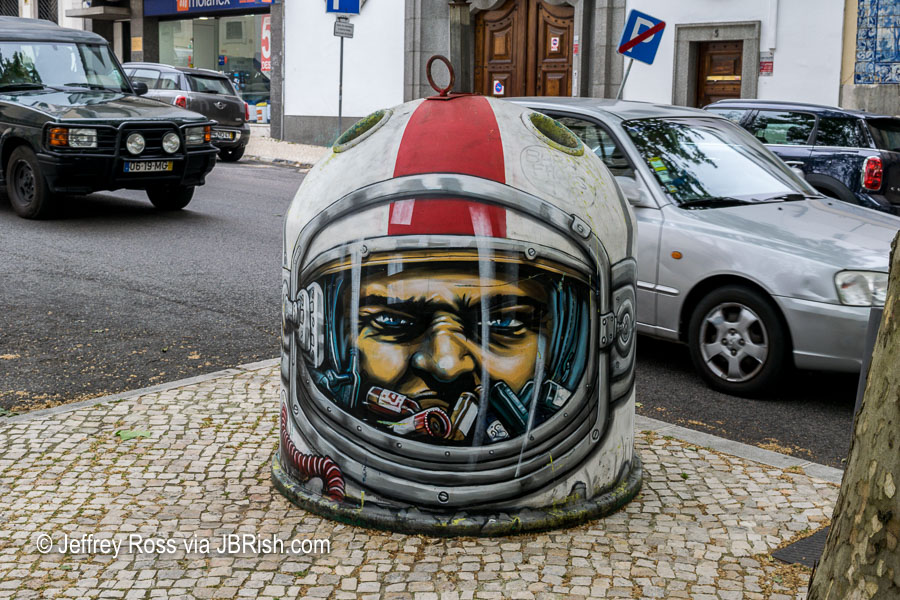
Street vendors made a variety of commodities available especially huge strawberries and the fruit dealers seemed to be popular with the commuters.
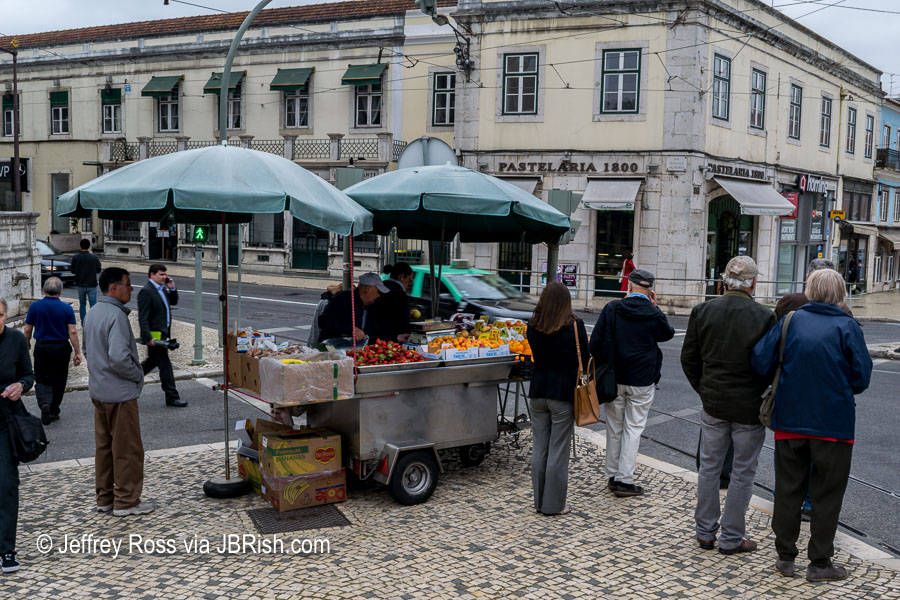
The main thoroughfare in Lisbon is the Avenida da Liberdade (Liberty Avenue). It is a very wide street with pedestrian walkways separating the lanes of traffic. The walkways are paved with an intricate design that we were led to believe were copyrighted and used just for the city of Lisbon. There were special work crews adept in repairing the swaths of walkways and maintaining the integrity of the artwork.
These pieces of intricate artwork were created with the use of limestones referred to as calçada Portuguesa (Portuguese pavement). The cobblestones are made into small squares and placed to create a design in black and white. Care should be taken when it is raining as these tend to be a bit slick when wet.
The “Avenue” is a great place to walk and window shop. There are also nice areas with water features, plants and restful benches. It is worthy of a stroll if you have time.

Our home base in Lisbon was near the Marquis de Pombal neighborhood which seemed to be a more or less central location relative to areas we were interested in investigating. It was a nice, but long-ish walk to Rossio Square, the Tejo River and shopping areas.
A Statue of Marquis De Pombal, the Portuguese Prime Minister from 1750 to 1777, is one of the highlights in this area of the city.
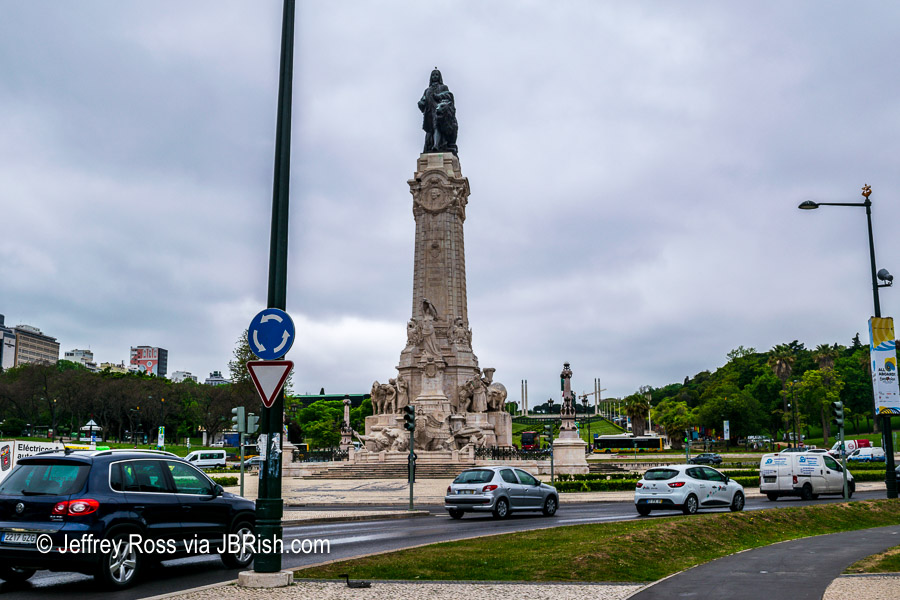
As you can see, the statue is in the middle of a large rotary which can be very busy at times, but there were plenty of traffic lights and ample opportunities to cross the roadways.
Here is a more picturesque shot of the statue. This is a popular stop for tourist buses because of its central location and proximity to the Edward VII Park (more about the park in a following post).

**********
***************
Continue reading about our trip to Portugal and Spain.
Read more Hiking and Exploration posts HERE
**********
All original content on this blog is copyrighted by Jeffrey B. Ross with ALL Rights Reserved. While reference links back to JBRish.com are appreciated and encouraged, please acquire approval for any reproduction of original content from this website.
©Jeffrey B. Ross – 2018 – JBRish.com
